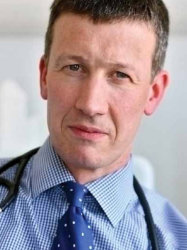BibTex format
@article{Ewing:2021:10.1158/1078-0432.CCR-20-4068,
author = {Ewing, A and Meynert, A and Churchman, M and Grimes, GR and Hollis, RL and Herrington, CS and Rye, T and Bartos, C and Croy, I and Ferguson, M and Lennie, M and McGoldrick, T and McPhail, N and Siddiqui, N and Dowson, S and Glasspool, R and Mackean, M and Nussey, F and McDade, B and Ennis, D and McMahon, L and Matakidou, A and Dougherty, B and March, R and Barrett, JC and McNeish, IA and Scottish, Genomes Partnership and Biankin, AV and Roxburgh, P and Gourley, C and Semple, CA},
doi = {10.1158/1078-0432.CCR-20-4068},
journal = {Clinical Cancer Research},
pages = {3201--3214},
title = {Structural variants at the BRCA1/2 loci are a common source of homologous repair deficiency in high grade serous ovarian carcinoma},
url = {http://dx.doi.org/10.1158/1078-0432.CCR-20-4068},
volume = {27},
year = {2021}
}

